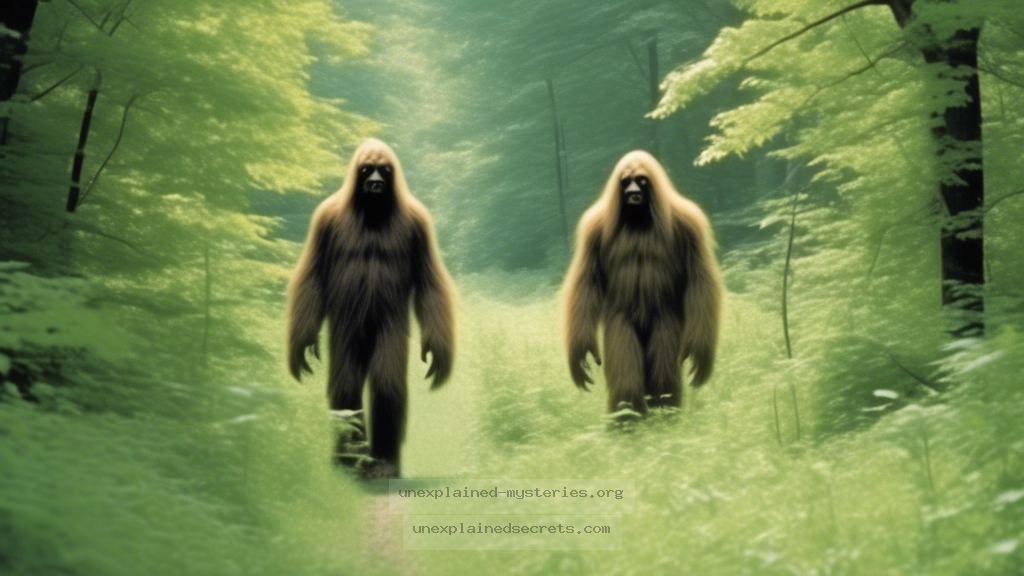What Really Happened During the 1977 Ohio Grassman Sightings?
What Really Happened During the 1977 Ohio Grassman Sightings?
The Ohio Grassman, a cryptid akin to Bigfoot, has intrigued enthusiasts and skeptics alike since it was first reported in the 1970s. The lore surrounding this creature raises an essential question: what really happened during the 1977 Ohio Grassman sightings? Understanding this series of events not only sheds light on the Grassman itself but also on the broader phenomena of cryptozoological investigations. This post delves into eyewitness accounts, historical context, and the implications of these sightings on the field of cryptozoology.
Introduction to the Ohio Grassman
The Ohio Grassman, often described as a large, bipedal creature covered in dark hair, has been a subject of fascination among cryptozoologists. The 1977 sightings brought the creature into the public eye, sparking a wave of interest that continues today. The significance of these events lies not only in the mystery of the creature but also in the impact they had on local communities and the field of cryptozoology as a whole. The 1977 sightings are a cornerstone for understanding the dynamics of cryptid reports and the social phenomena surrounding them.
Historical Context: The 1970s Era of Cryptozoology
The late 1970s was a pivotal time for cryptozoology, marked by a surge in monster-hunting fervor in the United States. This period saw the publication of numerous books and articles about purported cryptids, especially Sasquatch. The Ohio Grassman sightings fit within a larger trend of cryptid reports during this time. The culture of skepticism regarding government and scientific authorities also fueled public interest in unexplained phenomena. The Ohio Grassman emerged as a local legend, drawing parallels to other famous cryptids while maintaining a unique regional identity.
Eyewitness Accounts from 1977
In the summer of 1977, multiple eyewitnesses reported encounters with a large, hairy creature in rural areas of Ohio, particularly in the vicinity of the Salt Fork State Park. Descriptions varied slightly, but common features included a height of over seven feet, a strong odor, and a propensity for vocalizations that resembled howls or screams. The most notable account came from a family camping near the park. They claimed to have witnessed the Grassman rummaging through their campsite, leaving behind large footprints that were later cast in plaster for examination.
| Witness | Description | Location | Evidence |
|---|---|---|---|
| Smith Family | Large, hairy creature; over 7 feet tall | Salt Fork State Park | Plaster cast of footprint |
| Local Hunter | Heard loud howls; saw movement in the trees | Near Cambridge | No physical evidence |
| Campers | Creature rummaging through food supplies | Campground | Ripped tent and disturbed belongings |
Core Concepts: Understanding Cryptid Sightings
Cryptid sightings often intertwine with psychological and sociocultural factors. The Ohio Grassman is no exception. Behavioral scientists suggest that sightings may be influenced by environmental factors, personal beliefs, and group dynamics. Witnesses may experience heightened emotions in natural settings, leading to misinterpretations of ordinary wildlife as extraordinary creatures. The Grassman phenomenon can be interpreted through various lenses, including folklore, misidentification, and even mass hysteria. Each sighting serves to reinforce the existing mythos surrounding the creature, contributing to its legend.
Practical Implications: The Role of Evidence
The pursuit of evidence remains a crucial aspect of cryptozoology. For the Ohio Grassman, physical evidence like footprints and hair samples have been collected, but their authenticity is often contested. Skeptics argue that many so-called “evidence” pieces can be attributed to misidentified animals or hoaxes. For example, footprints can easily be fabricated, and hair samples may belong to known animals. Rigorous scientific methodology is vital for validating claims and advancing the field. This calls for improved techniques in evidence collection and analysis, including DNA testing and environmental sampling.
Alternative Perspectives: Skepticism vs. Belief
The Ohio Grassman has its share of skeptics and believers. Skeptics argue that the sightings can be explained through natural phenomena or psychological factors. They point to the lack of conclusive evidence and the existence of similar hoaxes in cryptid history. Conversely, believers argue that the creature’s elusiveness is consistent with the behavior of other cryptids, suggesting that legitimate proof may simply be yet to be discovered. This dichotomy fuels ongoing debates in the cryptozoological community about what constitutes valid evidence and the importance of maintaining a critical yet open-minded approach.
Common Misconceptions About Cryptids
Misconceptions abound in the world of cryptozoology, particularly regarding creatures like the Ohio Grassman. One common myth is that all cryptid sightings are fraudulent or the result of mass hysteria. While some cases may indeed be hoaxes, many eyewitness accounts come from credible individuals who genuinely believe they encountered something extraordinary. Furthermore, the idea that all cryptids must be scientifically proven before being considered valid overlooks the importance of folklore and cultural significance in human history. Understanding these nuances is crucial for a balanced perspective on cryptids.
Best Practices for Investigating Cryptid Sightings
For those interested in investigating sightings like those of the Ohio Grassman, several best practices can enhance the credibility and reliability of findings. Firstly, thorough documentation of eyewitness accounts is essential. Interviewing witnesses immediately after an encounter can yield more accurate details. Secondly, researchers should strive to collect physical evidence responsibly, ensuring that any samples are preserved and analyzed by qualified professionals. Finally, collaboration with local wildlife experts can provide context and help differentiate between known species and potential cryptids.
Future Developments in Cryptozoology
The field of cryptozoology is evolving, with advancements in technology offering new avenues for investigation. Tools like trail cameras, thermal imaging, and even drones are being employed to gather evidence in remote areas. Additionally, the rise of citizen science allows amateur enthusiasts to contribute valuable data to the field. As the Ohio Grassman gains renewed interest, ongoing research efforts may lead to breakthroughs in understanding not just this creature but the broader implications of cryptid studies. Collaborative initiatives between cryptozoologists and mainstream scientists could also pave the way for more rigorous investigation methods.
Conclusion: The Legacy of the Ohio Grassman Sightings
The 1977 sightings of the Ohio Grassman remain a compelling chapter in the annals of cryptozoology. These events highlight the complexities of human perception, cultural narratives, and the pursuit of truth in the face of mystery. As investigations continue and technology advances, the legacy of the Grassman serves as a reminder of our innate curiosity about the unknown. Whether you are a skeptic or a believer, the story of the Ohio Grassman invites us to explore the boundaries of science and folklore, pushing us to question what we know about the natural world.
Other Articles
Recent Posts
- What Happened to Flight MH370? The Conspiracy Theories That Still Haunt Us
- What Secrets Lurk Within the Walls of the Infamous Trans-Allegheny Lunatic Asylum?
- What Evidence Supports the Existence of Bigfoot in the Pacific Northwest?
- What Happened to the Indus Valley Civilization? Unraveling the Mysteries of Ancient Urban Life
- Can Telepathy Be Scientifically Proven Through Laboratory Evidence?







